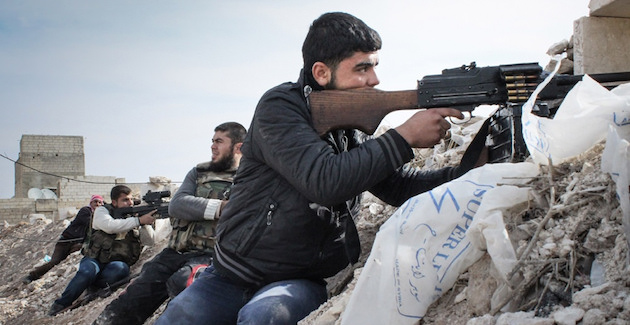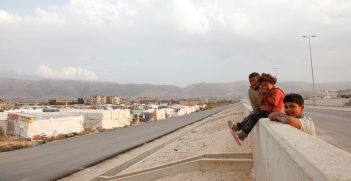Increased US Role Pushing Syria in New Direction

Following the G20 summit, the US and Russia announced a ceasefire agreement in southern Syria, the result of months of closed-door negotiations. This agreement comes just as the UN begins its seventh attempt to broker a peace deal, but what does it mean on the ground?
The recently negotiated ceasefire in southern Syria by the US and Russia, in effect since 9 July, represents an important point in the evolution of the Syrian conflict. It does not mean that we are headed for a negotiated peace soon but it can be used as a barometer of how all the interested parties are doing in this seven-year conflict with seemingly no end in sight.
Largely, the stalled Astana peace talks are tied to the success of the superpower-brokered agreement to implement a ceasefire in three southern provinces of Syria: Deraa, Suweida and Quneitra. The city of Deraa has often been called the birthplace of the Syrian rebellion, and has seen active combat throughout 2017 between regime and opposition military units. According to the most recent reports from the Syrian Observatory for Human Rights, the ceasefire is being respected for now.
The choice of the zone covered by the ceasefire reflects the shifting sands and changing fortunes of the actors in the Syrian conflict. Certainly, the armed Syrian opposition occupies some of the territory in Quneitra and Deraa. The regime sent reinforcements to Deraa earlier this year when rebels launched an offensive, which achieved some limited success. Islamic State is nowhere in sight and the province of Suweida is home to the Druze, a small religious minority. From the beginning, this minority has not chosen sides in the conflict and its territory remains relatively untouched by the war. Compared to other parts of Syria, this area would be one of the easier ones to conduct a successful ceasefire. This may help answer the question why this ceasefire might work when the four previous ones did not. The zone can be considered less conflictual than others in Syria and Islamic State is not present.
The Russians have characterised the ceasefire as a diplomatic triumph by presenting the ‘I told you so’ narrative to their American ceasefire partners. However, this narrative fails to bring us closer to events on the ground, which reveal significant changes in the Syrian conflict.
Another reason why the ceasefire was chosen in the south is due to strong concerns coming from Israel and Jordan regarding the presence of Iranian fighters like Hizbollah operating on behalf of the Bashar al-Assad regime near their borders. Moreover, when Israeli Prime Minister Benjamin Netanyahu observed the formation of a diplomatic Syria peace front composed of Turkey, Iran and Russia in the summer of 2016, he expressed his concern over the Iranian presence in Syria during his trip to Russia in March 2017.
The ceasefire is thus meant to blunt the Iranian presence, something which sounds more like an American victory than a Russian ‘I told you so’. Nevertheless, neutralising Hizbollah along the Israeli and Jordanian borders inside the ceasefire zone reflects the concerns of close US regional allies.
What does this all mean?
The ceasefire agreement is another sign that the failed Obama Syria policy of ‘leading from behind’ is a thing of the past. More American military personnel, arms and equipment have now been complemented by a diplomatic show of power in Syria. Already, in April 2017, the US has shown itself ready to use military force to back up the espoused US policy against the use of chemical weapons by the Assad’s government.
Since the Trump presidency, the Americans have shown themselves willing to take the offensive against Islamic State in Raqqa with their Kurdish allies. Whatever one may say about the accumulation of mistakes made by the Trump administration at home and abroad, Syria is beginning to look like a rare strategic success.
The ceasefire agreement is a check to the Russian presence in Syria despite brave assertions to the contrary by Russian President Vladimir Putin. The US has moved from a minor to a major player in the Syrian conflict since the departure of Obama from the White House. Since 2015, Russia has virtually occupied Syrian both militarily and diplomatically. Now Russia is being outflanked by the Turks, enjoying a free hand in northern Syria, and by the Americans who have quietly built up their material presence. The United States’ renewed diplomatic presence cannot be viewed lightly by either Tehran or Moscow.
As for the Kurds, for the moment, all is well. Their fighters are being trained and equipped by American advisers and the war against Islamic State is going well both in Syria and Iraq. Yet, although Kurdish fighters are liberating places like Raqqa, it remains to be seen if they can convert these military victories into political gains. After all, Raqqa is not a Kurdish city; it is an Arab city. As such, its political administration in the post-Islamic State period cannot be organised by the Kurds.
Turkey’s role
Meanwhile, Turkey is using all its diplomatic resources to convince the US to desist from arming the Kurdish military wing (YPG), whose brothers and sisters under the PKK continue to fight a costly war against the Turkish state. To illustrate Turkey’s resolve in this matter, Ankara undertook the Euphrates Operation ostensibly to clear out Islamic State along the northern border. It was also a clear message to the Kurds not to advance any further to the Turkish border.
Once the Turks had lured the Russians into believing they could somehow deliver the Syrian Sunni opposition, they were given a free hand in parts of northern Syria where they wasted no time in fending off the YPG. In the entire region, there is no nation championing the Kurdish cause and calling for the establishment of a Kurdish state. The Kurds are not of one mind on the Syrian conflict; they are hopelessly divided on generational, ideological and tribal lines. The multiplicity of Kurdish political parties is a reflection of all of the above.
Slowly, Russia is learning that backing its Iranian allies is a poisoned letter as other regional actors begin to reject the presence of Shia Hizbollah forces in Syria. This is not good news for Bashar al-Assad who depends on these and other paramilitary forces to shore up his top-heavy Alawite army and air force.
Believing that somehow Turkey would provide cover for obtaining the defeat of the Syrian opposition was an important Russian miscalculation. The incompatibility of Russian and Turkish interests in the region has a long history and Syria is just another example of it. To believe otherwise is to misread the failure of the latest Astana peace talks under the triumvirate of Russia, Iran and Turkey. Reports from Astana indicate that Turkey blocked much of the efforts deployed during the talks.
After defeat in Aleppo, many observers believed that the Syrian opposition was almost dead. The view was that once al-Assad had eliminated the northern enclave of Idlib, the job was finished. Then, the jubilant and over confident al-Assad made the error of orchestrating a chemical weapons attack on opposition strongholds in early 2017. The international response was almost unconditional in its condemnation. Russian and Iranian excuses that the Syrian opposition was responsible rang false, and the US intervened with a military strike. The sands were beginning to shift. As for the Turks, they were unwilling to see their Sunni allies eliminated and their territorial enclave in Syria overrun.
In the parlance of Mark Twain, the news of the death of the Syrian opposition has been greatly exaggerated. It remains a resilient and motivated force that, as part of the ceasefire, will gain confidence and encouragement from this diplomatic blow directed against Iran and its military presence in Syria.
Whether or not the new ceasefire holds is in one sense immaterial. The fact that the US and Russia negotiated it remains an important bilateral exploit. It is a blow to the Iranian presence in Syria and a warning to Bashar al-Assad’s regime that the US card is now fully in play.
Dr Bruce Mabley is the director of the Mackenzie-Papineau Group think tank based in Montreal devoted to analysis of international politics. He was formerly Canadian diplomat and served in Turkey at the beginning of the Syrian civil war.
This article is published under a Creative Commons Licence, and may be republished with attribution.





